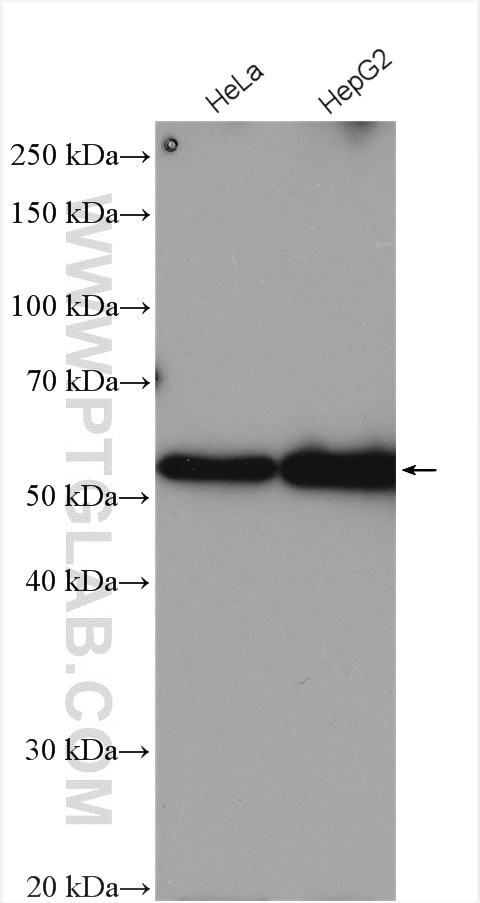UBR7 Polyclonal antibody
UBR7 Polyclonal Antibody for WB, ELISA
Host / Isotype
Rabbit / IgG
Reactivity
human
Applications
WB, ELISA
Conjugate
Unconjugated
Cat no : 16903-1-AP
Synonyms
Validation Data Gallery
Tested Applications
| Positive WB detected in | HeLa cells, HepG2 cells |
Recommended dilution
| Application | Dilution |
|---|---|
| Western Blot (WB) | WB : 1:2000-1:10000 |
| It is recommended that this reagent should be titrated in each testing system to obtain optimal results. | |
| Sample-dependent, Check data in validation data gallery. | |
Product Information
16903-1-AP targets UBR7 in WB, ELISA applications and shows reactivity with human samples.
| Tested Reactivity | human |
| Host / Isotype | Rabbit / IgG |
| Class | Polyclonal |
| Type | Antibody |
| Immunogen | UBR7 fusion protein Ag10445 |
| Full Name | ubiquitin protein ligase E3 component n-recognin 7 (putative) |
| Calculated Molecular Weight | 48 kDa |
| Observed Molecular Weight | 48-60 kDa |
| GenBank Accession Number | BC015046 |
| Gene Symbol | UBR7 |
| Gene ID (NCBI) | 55148 |
| RRID | AB_2256707 |
| Conjugate | Unconjugated |
| Form | Liquid |
| Purification Method | Antigen affinity purification |
| Storage Buffer | PBS with 0.02% sodium azide and 50% glycerol pH 7.3. |
| Storage Conditions | Store at -20°C. Stable for one year after shipment. Aliquoting is unnecessary for -20oC storage. 20ul sizes contain 0.1% BSA. |
Background Information
UBR7 (C14orf130), is a 425-amino-acid putative E3 ubiquitin-protein ligase which is a component of the N-end rule pathway. The N-end rule pathway is a ubiquitin-dependent system where E3 ligases called N-recognins, including UBR1, UBR2 and UBR7 (N-recognin-7), leading to target protein ubiquitination and subsequent degradation (PMID: 19008229). UBR7 contains a PHD-type zinc finger and a UBR-type zinc finger domain (PMID: 14702039), and probably undergoes acetylation (PMID: 19413330). Till date its precise function is not well known. Proteintech's UBR7 antibody 16903-1-AP is able to detect UBR7 with a theoretical MW of 48 kDa.
Protocols
| Product Specific Protocols | |
|---|---|
| WB protocol for UBR7 antibody 16903-1-AP | Download protocol |
| Standard Protocols | |
|---|---|
| Click here to view our Standard Protocols |


